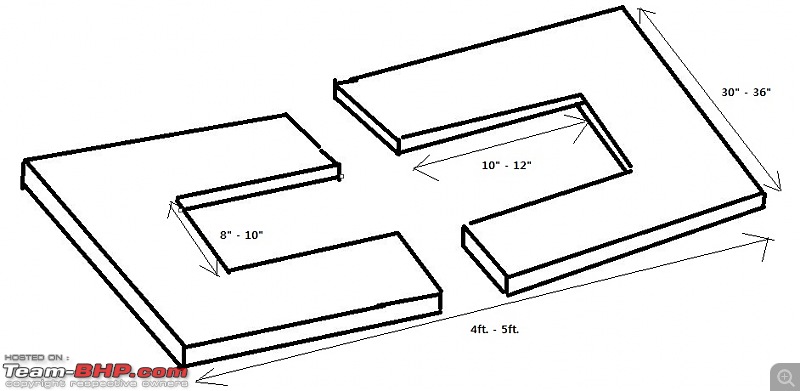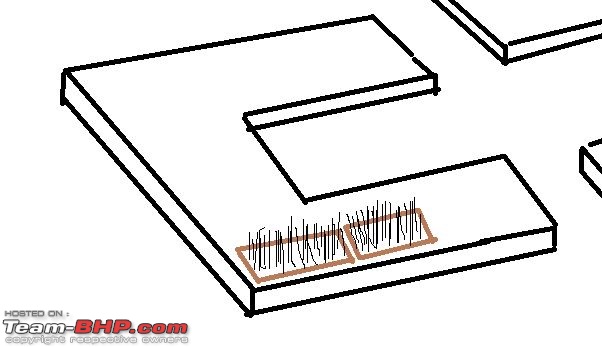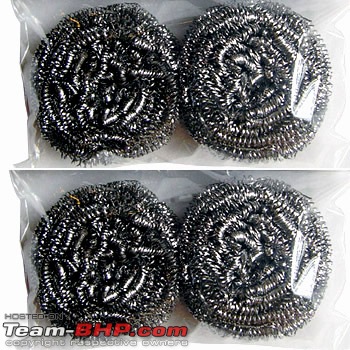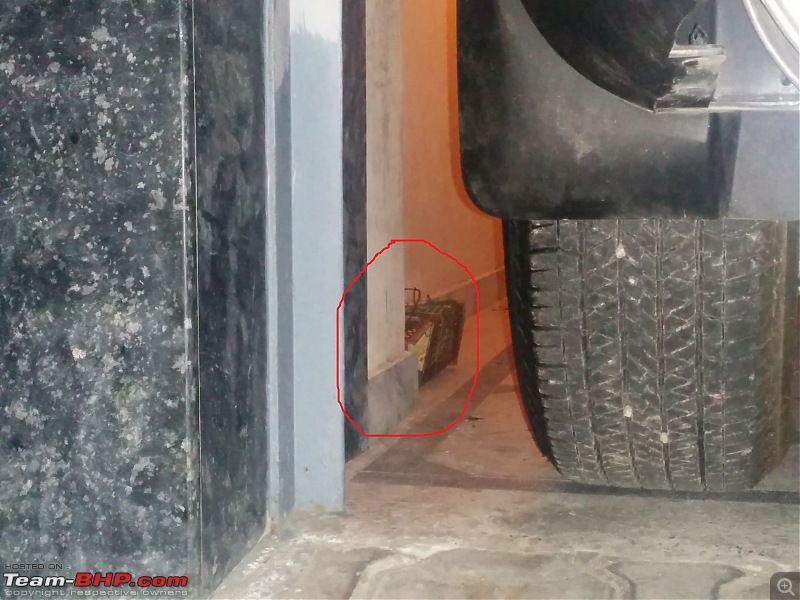Team-BHP
(
https://www.team-bhp.com/forum/)
I had faced the same problem with my Swift, where the building rats had chewed through a whole bunch of wires. Replacing them set me back by almost Rs.2500/-.
The service adviser at Mandovi told me that rats hate the smell of Dettol. To try out this theory, I bought a common spray bottle, and filled it.
I spray the Swift's engine bay liberally, as well as the engine block of my Pulsar 220 twice a week, and I haven't had a single incident in the last 4 years.
Though my neighbors aren't so lucky. :D
Do try it out guys. I can vouch that it really works.
We have a major rat problem for the cars parked on the road outside our society. Some of the solutions that have been proposed in the past are:
1. Cigarette sticks.
2. Put rat poison cakes in the engine bay.
3. Run the car regularly.
4. Get some cats in the parking area.
5. Install metal brushes in the engine bay.
#1 Does not work.
#2 Was doing this till now till a Maruti service adviser scared me off saying that one of his customers had the rat die inside the running board of the car and they had to cut the section out in order to get it out.
#3 Suggested by the same adviser. He says that rats wont enter a warm engine. Sounds logical for Mumbai weather (could be the other way round for Delhi winters) but yet to be proven.
#4 Definitely effective. We have a few cats inside the society compound and no rats. Unfortunately can't have cats outside the compound as the dogs kill the cats.
#5 Has been suggested elsewhere in this thread, intend to try this out soon.
Dettol has phenolic compounds in it - essentially a weak acid (which is also why it stings when applied to wounds)
A really dilute solution of dettol shouldnt hurt but should stink enough to keep rats out - but I am still a bit cautious about spraying even highly diluted acid anywhere around my engine.
Quote:
Originally Posted by octaneaddicted
(Post 3724054)
I had faced the same problem with my Swift, where the building rats had chewed through a whole bunch of wires. Replacing them set me back by almost Rs.2500/-.
The service adviser at Mandovi told me that rats hate the smell of Dettol. To try out this theory, I bought a common spray bottle, and filled it.
I spray the Swift's engine bay liberally, as well as the engine block of my Pulsar 220 twice a week, and I haven't had a single incident in the last 4 years.
Though my neighbors aren't so lucky. :D
Do try it out guys. I can vouch that it really works.
|
Quote:
Originally Posted by GrammarNazi
(Post 3722728)
Maybe something like this could also help
|
Nice ones. But rats will easily get into these covers from the base. Need something that leaves zero gap at the floor level.
Quote:
Originally Posted by an_and
(Post 3722870)
GTO, I remember reading you saying about how you engaged PCI and they got rid of all the rodents. What happened about that.
|
The contract is still on and I intend to renew it. Reduced the problem, yes, but hasn't eliminated it.
I have been using Zorrick 88 liquid to clean my engine bay as it removes oily deposits. This luckily was found to be an excellent repellant for rodents as there hasn't been a single incident of rat damage in any of my cars. Additionally it also eradicates any traces of moisture which might indice rust in the long run.
I don't use it on all parts- mostly on rubber, plastic parts and wires so that ample smell is there in the engine bay to repel the rodent.
Avoid using it on hot parts like engine head etc.
Regards
Shashi
Edit- If the parking is closed and secure, one can also keep the hood open. Rats really hate light, and closed engine bay is the best place for them to hide
Quote:
Originally Posted by GTO
(Post 3722644)
Thanks! Please share the diagram once back, didn't understand this entirely.
|
All right, here are the diagrams of what you need to do.
What you need:
1. A carpenter, or DIY carpentry tools;
2. Wooden boards 3/4" - 1" thick, approximately 5ft. x 3 ft., x4;
3. Wire brushes, around 50-60;
4. Steel wool, as required;
5. Miscellanoeus: Cabinet door closing magnets, cabinet drawer handles, screws, etc.
What to do:
Step 1: 
Depending on the size of tyres, cut 4 sets of 2 wooden boards as per the design above. Check to see how they fit around the tyres as per the diagram shown in Step 3.
Step 2:

Fix wire brushes as shown (screw / nail them in or use adhesive, your choice), as close to each other as possible, reaching to at least 12" - 15" from the outer margin. Fill gaps between the wire brushes with steel wool similar to the picture below.

Step 3:
Place two sections around each tyre, as shown below:
Use cabinet closing magnets (similar the pic below) to keep the two sections together around each tyre.
Attach cabinet drawer handles to the edges of the boards to place / remove them and stack them safely without injuring yourself.
For long term parking of cars, this will be an effective solution. For daily-use vehicles, this may be a hassle to place and remove every day.
In case someone decides to manufacture this commercially on a large scale, please pass on a royalty to me. :D
Edit: Kindly do remember to remove all the boards before driving off!
Very interesting thread. A few months ago I had the exact same problem - rats using my vehicle as their night shelter. Searched thru innumerable threads in tbhp and across the internet. Even called in a pest control guy to help.
My vehicle is parked in the open - so no pest control was effective. Moth balls, tobacco, tufkote repellents, a rat-guard spray - tried everything with no visible improvement.
Had then pretty much finalized with having a solution of that foot-high metal plate around the parking.
Luckily for me, a three member cat family came by, stayed along for a couple of days, got rid of the menace, and its been good riddance since.
And if they come back, I'd be inclined to go with ss-traveller's idea - the only thing I was unsure of - can the rats just jump over this - I was told they can - hence that skipped this as an idea at that point.
Quote:
Originally Posted by XD2
(Post 3725747)
...I'd be inclined to go with ss-traveller's idea - the only thing I was unsure of - can the rats just jump over this - I was told they can - hence that skipped this as an idea at that point.
|
Rats don't like performing this kind of yoga... :D
Quote:
Originally Posted by Leoshashi
(Post 3725177)
If the parking is closed and secure, one can also keep the hood open. Rats really hate light, and closed engine bay is the best place for them to hide
|
If the parking area is a closed garage, why not just make it rat-proof by sealing all the entry points?
Also, the bonnet open idea won't work for modern cars with big engine covers. Ample space below them for them to hide.
Quote:
Originally Posted by SS-Traveller
(Post 3725635)
All right, here are the diagrams of what you need to do.
|
:thumbs up Many thanks! Fencing the wheels is surely simpler than the entire car.
Do rats climb up only from the tyres? Don't they directly jump up the bumper and enter through the radiator grille / air-dam? Can't they jump onto the exhaust plumbing and crawl to the engine bay from there?
Quote:
Originally Posted by GTO
(Post 3726373)
Do rats climb up only from the tyres? Don't they directly jump up the bumper and enter through the radiator grille / air-dam? Can't they jump onto the exhaust plumbing and crawl to the engine bay from there?
|
I personally have seen rodents going inside from all the places you mention. Also from side steps [in case of SUV's]
In case of low slung cars, like a Civic, they can merely jump at the lowest contact point & climb up from there.
IMHO, its too much of a bother, creating these methods without being sure if it would work & then doing it every-time you need to take out the car & securing it when you come back. But, in case you can't keep pets, then you may go ahead with your chosen method.
I just pray, it works :thumbs up:)
Quote:
Originally Posted by GTO
(Post 3726373)
Do rats climb up only from the tyres? Don't they directly jump up the bumper and enter through the radiator grille / air-dam? Can't they jump onto the exhaust plumbing and crawl to the engine bay from there?
|
Good points.
Rats and mice don't jump upwards (unlike cats) - they stand on their hind feet and pull themselves up, or climb up something. So their limit of climbing would be the limit of the length of their bodies. They can of course jump downwards from fairly big heights, so you'd need to check if rats have access to any overhanging balcony / drainpipe above the car, from which they can jump down on to the car.
Depending on the height of the bumper / air-dam (i.e. how low-slung the car is), and how big the animal is, they
may be able to climb into the engine bay without using the tyres. Or, if there is a car cover, the edges / fastener straps of which trail on / hang close to the ground, yes again, they might climb up that.
For low-slung cars, it may be a good idea to add raised ramped platforms (4"-6" high or so) on which the tyres rest, and then fence the tyres with the wire brush boards (leaving the bumpers / air-dam / exhaust pipe are raised higher off the ground). For SUVs or sedans with high GC, that shouldn't be an issue.
Pied Pipers should have been rich if they existed in Mumbai! :D
Thanks Sheel & SS-Traveller.
Added the following 3 links to the opening page so no visitor on this thread misses them:
Quote:
Originally Posted by GTO
(Post 3720990)
|
My mechanic suggested a simple solution to the rat menace. Buy loose tobacco or those "tambaku" packets from the local paan/cigarette shop. open partly and fit it in the corners. Rats cant stand the stench of tobacco.
Disclaimer :) I havent faced this problem yet, hence havent tried it.
After trying lot of solutions, finally have used the traditional method. Have placed mouse trap, one on each side of the car, and the result is that I get hold of one rat atleast once a week. I free them in play ground when i go for cricket.
This old method is working for me and there has been no damages in my car since me using mouse trap.


Quote:
Originally Posted by rahul_kej
(Post 3728738)
After trying lot of solutions, finally have used the traditional method.
|
You seem to have walls on either sides. I presume you also have one in the front. Wouldn't having a physical barrier like a gate with no openings be good enough here?
The rats in your trap are the smaller ones, the large bandicoots will never be caught in these traps. There's the other trap which has a thick iron rod which falls on the bandicoot and will eventually kill it. In fact, they can pull these traps along with them as well. The only challenge is by the time you wake up in the morning there's a hell lot of stinking and a lot of cleaning is needed.
| All times are GMT +5.5. The time now is 07:48. | |






